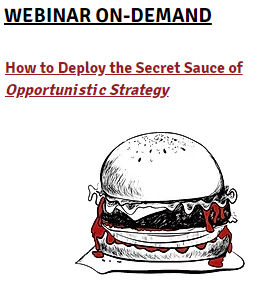Have you heard the one about the man who doesn’t walk into a bar?
Medical groups generally address governance from the aspect of current control. That’s the issue of who’s in charge.
I’ve written many posts on what governance structures promote, and what governance structures inhibit, the ability of a group to set strategy, to implement that strategy, and to take action quickly. For example, see Why Your Group Has To Get Out Of Its Own Way. How Not To Make This Governance Mistake, and The Fast And The Dead.
But there’s another aspect of group governance: succession planning and it comes in two flavors, ordinary and catastrophic.
Unfortunately, few groups engage in seriously addressing even the simpler issue of ordinary succession in medical group governance. Those that do, generally approach it in the contractual sense only. That is, they have a process as a part of their governing documents, their partnership agreement or other organizational agreement, that provides for election of the board and the officers or the managing member and so on. They’re preparing for a smooth transition, for the instance in which Bob’s term as group president ends and Sally’s begins.
But that’s where they stop.
Perhaps it’s because those in power aren’t comfortable with the notion of a catastrophic transition: What would happen to the group if the current leader or leaders dropped dead? Of course, it doesn’t have to be death. It can be incapacitation, or that they quit, or that they left without more than a day’s notice to take care of a loved one; the reason doesn’t matter.
The key is to use that possibility as fuel to propel the group to create a broader process of preserving institutional knowledge and training future leaders.
In connection with institutional knowledge, preserve and collect, in a way that can be readily accessed and shared, the group’s leadership knowledge: the facts, the experiences, the concepts, the methodologies and other information that the leaders hold.
And then mentor future leaders, for example, junior officers or committee leaders willing to take on more responsibility in the future.
But equally important and perhaps the key to the entire exercise is to frame a part of that mentorship in terms of what roles those juniors would be able to step into immediately if they were called upon to do so. And then, begin to assign parts of those roles to them now.
In addition to being far more effective training for any leadership change, this approach helps future leaders understand that there’s nothing to fear about their abilities or the future of the group in terms of a catastrophic leadership change event.
And, oh, that man who didn’t walk into the bar? He was the bartender.




